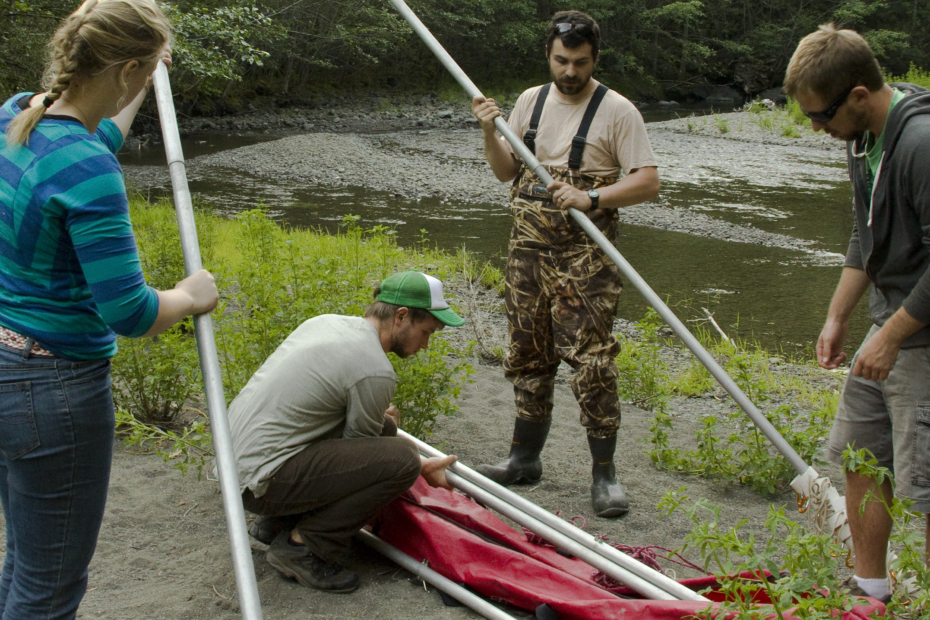The air is humid and warming as we creep into a coastal summer, shaded by redwoods. The nets are open and ready. The triple high is in its place. The team has been training all fall and winter, and is ready to strut their stuff. We’ve read the literature, studied the techniques. It is officially batting season.
(batting, from the verb to bat, as in, to go out at night with nets and catch bats)
Just as we were wrapping up final projects and final exams, we were finally able to take advantage of the warm, summer-like spring that had been hitting the North Coast. Conveniently, it is around this time in late April and early May that wave of bat migration is hitting our coastal redwood forests. Each year, hoary bats and silver-haired bats migrate between summer and winter habitats. Where exactly those habitats are is still unclear, but Ted Weller and the US Forest Service have been working on figuring it out, or at least figuring out when they are moving through a given area. The mild winters and fairly stable temperatures amongst the coastal forests are ideal places for bats to move through, where they are less likely to be plagued by high winds, cold temperatures and lack of insects as a food source, all of which would make the high energy expenditure for flying very difficult.
As I talked about in previous posts, I spent multiple nights in the fall and winter catching bats as part of Ted’s ongoing research. We learned some interesting new things about possible resident hoary and silver-haired bats, and even had a new record, catching hoary bats in the middle of January.
We were able to coordinate enough logistically in early May to get out into the field and check in on what the bats were doing. We invited Humboldt State students (undergraduate Mammals Management and graduate seminar on bat ecology) to join us for the netting effort. It was fun to show students the bats, most of whom had never seen a bat up close before.
Our first night, accompanied by the Wildlife Management class, was fairly tame. We caught several species of Myotis, essentially the north coast trifecta (Yuma Myotis, Little Brown Myotis and California Myotis). As far as our migratory friends went, none managed to make their way into our nets (though I believe they were detected on the bat detector set out that night).
About a week later, we set out with a mix of graduate and undergraduate students who had taken Joe Szewczak’s bat ecology seminar. (Joe is the “bat guy” at Humboldt State, and also my advisor). We set up along the same river habitat as the week before, but in a different netting location. Things started off fairly slow, with the first bat caught being identified as a Yuma Myotis (confirmed with echolocation call). However, gradually we started catching more bats and on the second successful net check, we had caught a hoary!
All in all, it ended up being a fairly busy night, catching about 14 bats of 5 different species (silver haired bat, hoary bat, Yuma Myotis, Little Brown Myotis and California Myotis). And we weren’t lucky enough to catch one, but when Joe downloaded his bat detector data at the end of the night, it indicated that a red bat had also been flying around the site.
It was great to get back out into the field, and seeing the little dog-like faces of bats always cheers me up. It made a great end to the semester, and a little like a teaser for what was to come this summer. Summer is batting season, and I’ll be bouncing back and forth between different bat field sites doing playback experiments. In July, while I’ll be staying around Humboldt, there’s going to be lots of bat catching as I put my protocols for testing bat reactions to social calls into action, as well as helping my lab mate with his work on silver haired bats.
Can’t wait!






Photos provided by Matt Lau, a graduate student in the Wildlife department at HSU. A brief description of his research can be found here.
